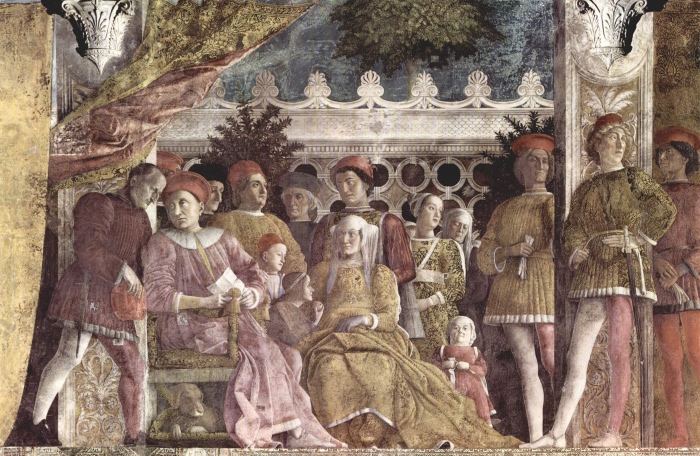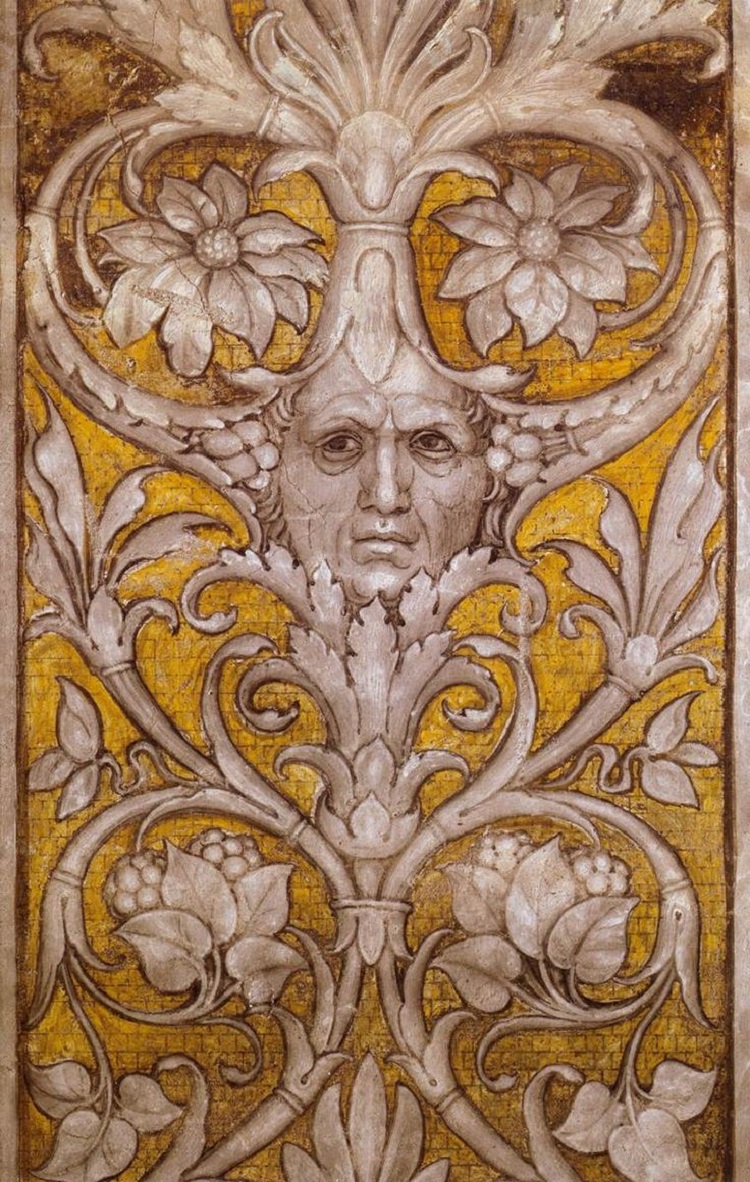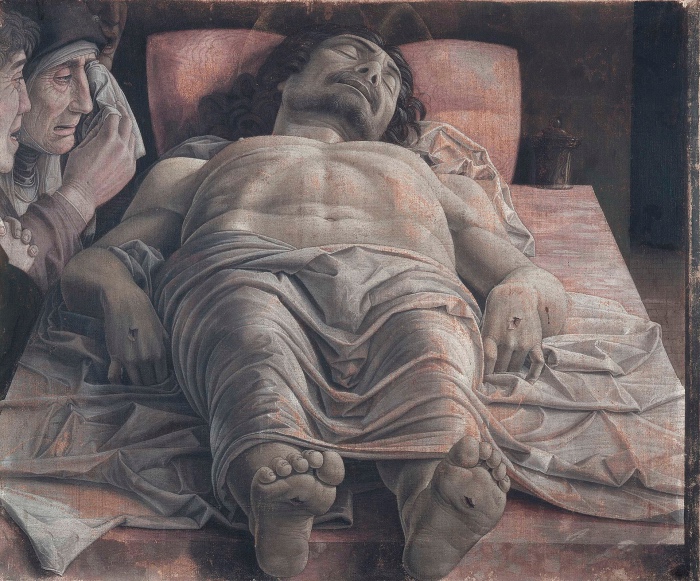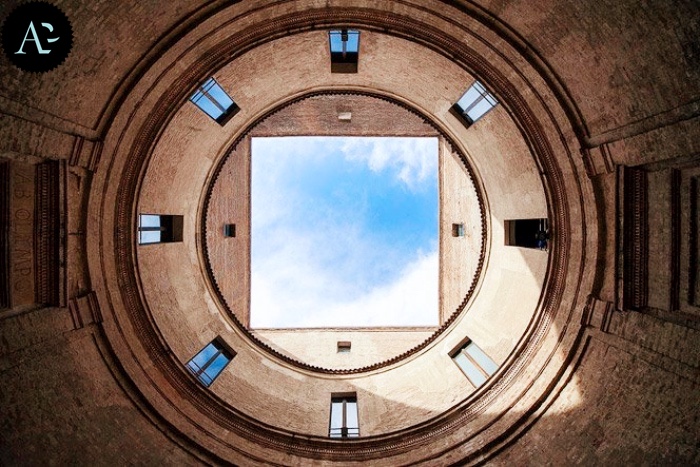5 things to know about Andrea Mantegna: life, works and curiosities

5 THINGS TO KNOW ABOUT ANDREA MANTEGNA: LIFE, WORKS AND INTERESTING FACTS
Andrea Mantegna was an Italian Renaissance painter and engraver, best known for his paintings of historical and mythological subjects, as well as his attention to perspective and realistic rendering of details.
Here is what you need to know about his life and works.
5 things about Andrea Mantegna

L’autoritratto di andrea Mantegna nascosto nella decorazione ella camera degli Sposi di Palazzo Ducale.
1. WHO ANDREA MANTEGNA WAS
Mantegna was born on the island of Carturo, in the province of Padua, and began his artistic career as an apprentice in the workshop of the painter Francesco Squarcione in Padua. Later, Mantegna worked for the Gonzaga court in Mantua, where he produced many of his masterpieces, including the series of frescoes in the famous Bridal Chamber.
His works are characterised by a strong emphasis on the realistic rendering of details, the use of perspective and shadows to create a feeling of depth, and the attention to historical and architectural details in his paintings.
2. WHERE ANDREA MANTEGNA LIVED AND WORKED
Andrea Mantegna lived and worked in various Italian cities during his lifetime.
Padua was the city where he trained as an artist, as he was a pupil of the painter Francesco Squarcione for many years who had his workshop in the city of Padua.
The city of Mantua, on the other hand, represents the place of his artistic consecration.
In 1460 Mantegna was invited to the court of the Gonzaga family, where he worked as a painter for many years.
In Mantua he produced many of his most famous works, such as the ‘Bridal Chamber’.
However, Mantegna also made a trip to Rome where he stayed for a short time to carry out some works for the Pope and the papal court.
Finally, I cannot fail to mention Venice, the city where Mantegna’s wife and sister of Giovanni Bellini was born. Mantegna was married in 1466 and lived with Nicolosia Bellini in Venice for a short period, where it is certain that he frequented his brother-in-law’s famous workshop.
3. THE MOST IMPORTANT WORKS BY ANDREA MANTEGNA
Andrea Mantegna is famous for some of the most beautiful works created between the 15th and 16th centuries. Here are his most famous works:
- Bridal Chamber: a series of frescoes in the Castle of San Giorgio in Mantua, painted between 1465 and 1474, depicting life at the Gonzaga court. Among the decorations, Mantegna seems to have hidden a self-portrait of himself.
- Madonna della Vittoria: an oil painting on canvas, made around 1495, celebrating the victory of Francesco II Gonzaga over the Venetian Republic in the Battle of Fornovo.
- Cristo morto (Dead Christ): an oil painting on panel, painted around 1480, depicting the dead Christ lying on a stone table. Today the painting is preserved and exhibited at the Brera Art Gallery in Milan.
- Saint Sebastian: an oil painting on panel, made around 1457-1459, depicting the martyrdom of Saint Sebastian.
- Adoration of the Magi: an oil on panel painting, made around 1465-1470, depicting the Nativity with the Madonna, St Joseph and the Magi.
These are just a few great masterpieces, but there are many other important works by Andrea Mantegna that are worth getting to know.

Andrea Mantegna, Cristo Morto
4. CURIOSITIES ABOUT ANDREA MANTEGNA
Mantegna was a versatile artist who devoted himself not only to painting but also to sculpture and engraving. In particular, his engravings were highly appreciated for their quality and attention to detail.
Mantegna was a great lover of Roman and Greek antiquities and was often inspired by their art and culture for his works. Like all Renaissance artists and intellectuals, he was a very cultured man and interested in many disciplines, including philosophy and science.
It seems, in fact, that he read the texts of antiquity and had contact with important philosophers and scientists of his time.
Mantegna was one of the first Italian Renaissance artists to use the technique of perspective in a precise manner. Indeed, his attention to architectural detail and his ability to create depth of space were highly appreciated by his contemporaries, but he also inspired artists of later centuries.
When creating his works, Mantegna spent a lot of time on preparation and planning. For example, before painting the ‘Bridal Chamber’ in Mantua, he had the entire room redesigned to create the effect he desired.

La vista verso il cielo nella casa di Mantegna a Mantova.
5. CURIOSITIES ABOUT ANDREA MANTEGNA
Andrea Mantegna died in Mantua, the city where he spent most of his life and worked as court painter for the Gonzaga family.
He died on 13 September 1506 at the age of about 75. His house still exists and the courtyard with the view to the sky, reminiscent of the oculus in the Bridal Chamber, can still be admired.
Mantegna was buried in the church of Sant’Andrea in Mantua, where his famous polyptych of the Altare di San Zeno is also located.
Follow me on:
About me
In this blog, I don't explain the history of art — I tell the stories that art itself tells.


